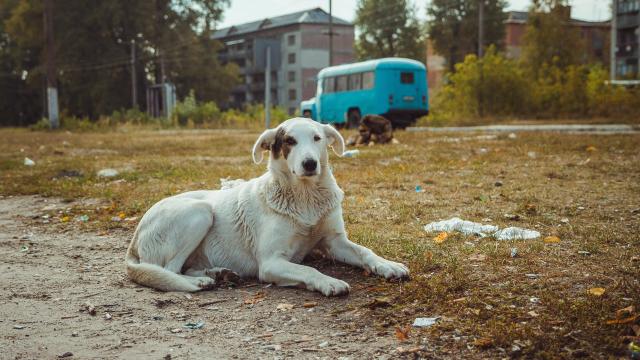New research shines a light on how the Chernobyl disaster changed the DNA of the dogs that remained in the area. Scientists collected samples from hundreds of free-roaming canines in the exclusion zone and found that they were genetically distinct from dogs elsewhere in the world. The scientists are still exploring the potential long-term health effects from radiation exposure in these dogs, but what we learn might help us better prepare for similar accidents in the future, the researchers say.
The 1986 Chernobyl disaster in the now-abandoned Ukrainian city of Pripyat is perhaps the most infamous nuclear accident of all time. The initial explosion and subsequent fires at the plant scattered radioactive material into the surrounding environment. To this day, there remains a designated 1,000-square-mile area around the plant where elevated radiation is thought to be most hazardous to life, known as the Chernobyl Exclusion Zone.
Several dozen people died during the accident and attempted clean-up, and it’s thought that at least hundreds likely developed cancer as a result of radiation exposure. The immediate impacts were also devastating for local wildlife. Nowadays, though, the area has become safe enough for humans to visit (at least for short periods) and some animal and plant populations have even bounced back stronger than they were before.
In 2017, scientists at the University of South Carolina and others began the Dogs of Chernobyl Research Initiative. They noticed that feral dog populations in and around the zone, some of which may have begun with pet dogs abandoned during the human evacuation, would surge in the summer then crash in the winter due to a lack of resources. Teaming up with veterinary and animal welfare clinics, they provided these dogs medical exams, vaccinations, and neutering/spaying if needed. But they also took the chance to study them up close, taking blood samples to analyse their DNA.
When they compared the genetics of the Chernobyl dogs to dogs from around the world, they found a clear distinction — enough to indicate these dogs and their descendants truly have been surviving in the zone since 1986 and that the experience has changed them on a deep level. But they also found differences among the exclusion zone dogs. The team’s findings are published this month in Science Advances.
“We find that there are two major populations of dogs within the Chernobyl Exclusion Zone; those that live in the industrial areas of the Chernobyl Nuclear Power Plant and those that live approximately 15 kilometers away in the residential area called Chernobyl City,” lead author Gabriella Spatola told Gizmodo. Spatola is a postdoctoral fellow at the Cancer Genetics and Comparative Genomics Branch, which studies dog genes as part of the National Human Genome Research Institute.
Within these two large populations, Spatola and her team found, there were 15 families in total. But they saw plenty of migration and intermixing as well, with the largest family having dogs found all across the sites they studied. They also have some purebred ancestry, particularly from shepherd-type breeds, Spatola said.
Even today, we’re learning new things about how Chernobyl affected those living around it. And as far the authors know, this is the first genetics research of its kind that’s included larger nonhuman mammals like dogs. They haven’t yet studied exactly how Chernobyl’s radiation changed these dogs and their lineage physically, but that’s next on the list.
“The Chernobyl dog population provides a unique opportunity to study the long-term effects of radiation on a population that is closely linked to humans in a natural setting,” Spatola said. “Nuclear disasters will inevitably occur, and the information that we can gain from studying the impact this has on domestic populations will provide key insight into how we can be better prepared in the future.”
